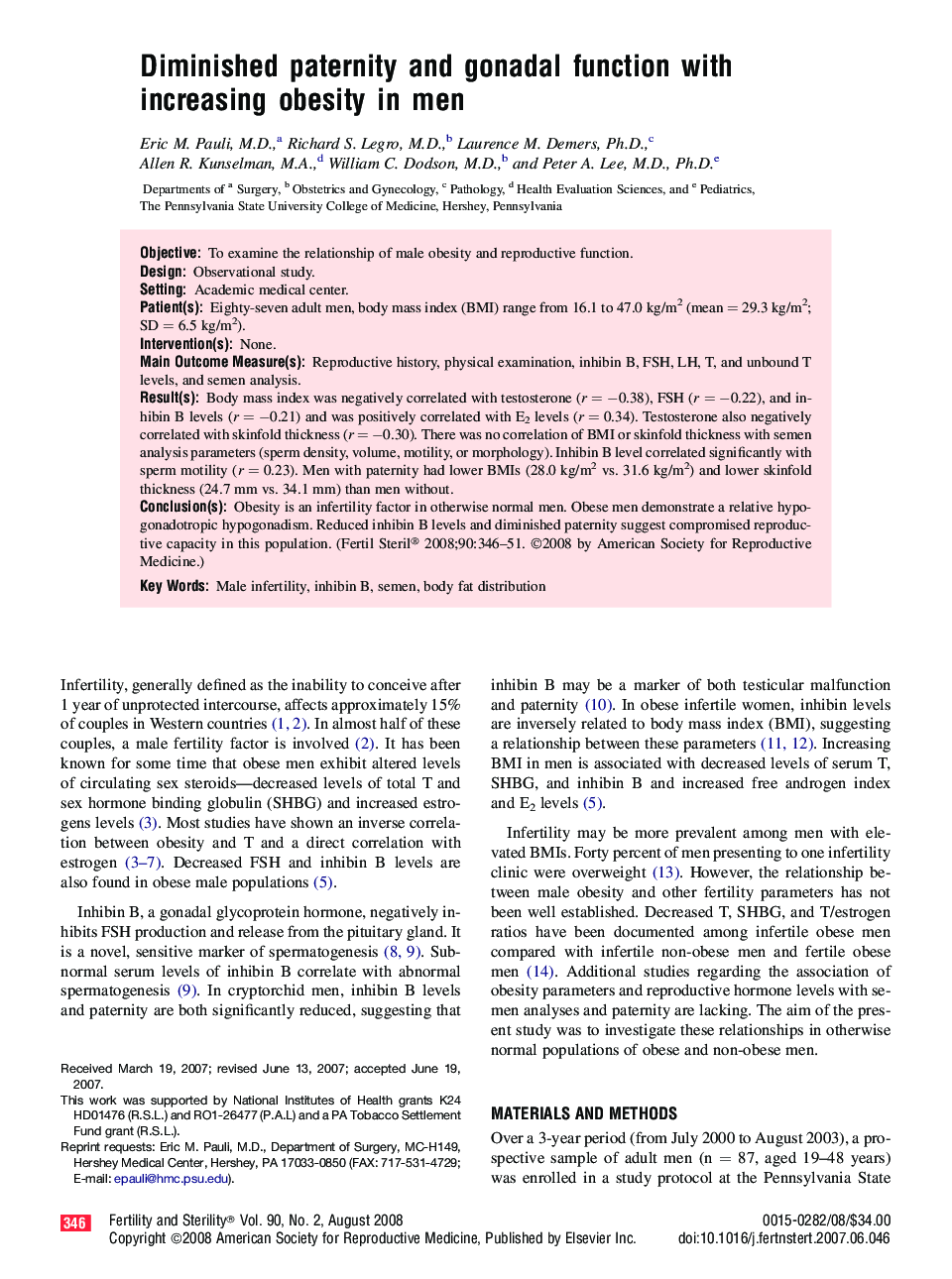| Article ID | Journal | Published Year | Pages | File Type |
|---|---|---|---|---|
| 3934914 | Fertility and Sterility | 2008 | 6 Pages |
ObjectiveTo examine the relationship of male obesity and reproductive function.DesignObservational study.SettingAcademic medical center.Patient(s)Eighty-seven adult men, body mass index (BMI) range from 16.1 to 47.0 kg/m2 (mean = 29.3 kg/m2; SD = 6.5 kg/m2).Intervention(s)None.Main Outcome Measure(s)Reproductive history, physical examination, inhibin B, FSH, LH, T, and unbound T levels, and semen analysis.Result(s)Body mass index was negatively correlated with testosterone (r = −0.38), FSH (r = −0.22), and inhibin B levels (r = −0.21) and was positively correlated with E2 levels (r = 0.34). Testosterone also negatively correlated with skinfold thickness (r = −0.30). There was no correlation of BMI or skinfold thickness with semen analysis parameters (sperm density, volume, motility, or morphology). Inhibin B level correlated significantly with sperm motility (r = 0.23). Men with paternity had lower BMIs (28.0 kg/m2 vs. 31.6 kg/m2) and lower skinfold thickness (24.7 mm vs. 34.1 mm) than men without.Conclusion(s)Obesity is an infertility factor in otherwise normal men. Obese men demonstrate a relative hypogonadotropic hypogonadism. Reduced inhibin B levels and diminished paternity suggest compromised reproductive capacity in this population.
